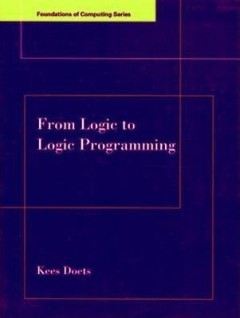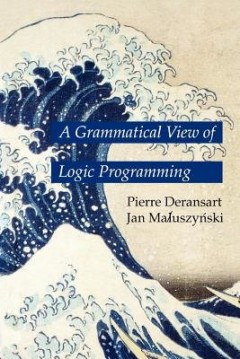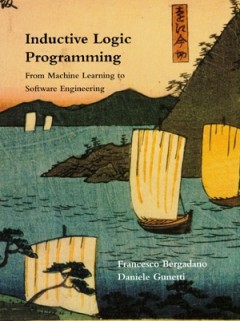Filter by

From Logic to Logic Programming
This mathematically oriented introduction to the theory of logic programming presents a systematic exposition of the resolution method for propositional, first-order, and Horn- clause logics, together with an analysis of the semantic aspects of the method. It is through the inference rule of resolution that both proofs and computations can be manipulated on computers, and this book contains ele…
- Edition
- -
- ISBN/ISSN
- 9780262288477
- Collation
- 1 online resource (xii, 214 pages) :illustrations.
- Series Title
- -
- Call Number
- -

A grammatical view of logic programming
This book describes a complementary approach that views logic programs as grammars and shows how this new presentation of the foundations of logic programming, based on the notion of proof trees, can enrich the field.Within the field of logic programming there have been numerous attempts to transform grammars into logic programs. This book describes a complementary approach that views logic pro…
- Edition
- -
- ISBN/ISSN
- 9780262290845
- Collation
- 1 online resource (xxxi, 454 pages) : illustrations.
- Series Title
- Logic Programming
- Call Number
- -

Inductive logic programming : from machine learning to software engineering
Although Inductive Logic Programming (ILP) is generally thought of as a research area at the intersection of machine learning and computational logic, Bergadano and Gunetti propose that most of the research in ILP has in fact come from machine learning, particularly in the evolution of inductive reasoning from pattern recognition, through initial approaches to symbolic machine learning, to rece…
- Edition
- -
- ISBN/ISSN
- 9780262288422
- Collation
- 1 online resource (vii, 240 pages) : illustrations.
- Series Title
- -
- Call Number
- 005 BER i

Warren's Abstract Machine: A Tutorial Reconstruction
"This tutorial demystifies one of the most important yet poorly understood aspects of logic programming, the Warren Abstract Machine or WAM. The author's step-by-step construction of the WAM adds features in a gradual manner, clarifying the complex aspects of the design and providing the first detailed study of WAM since it was designed in 1983. Developed by David H.D. Warren, the WAM is an abs…
- Edition
- -
- ISBN/ISSN
- 9780262255585
- Collation
- 1 online resource (xvi, 114 pages) :illustrations.
- Series Title
- -
- Call Number
- -

Programming with constraints :an introduction
The job of the constraint programmer is to use mathematical constraints to model real world constraints and objects. In this book, Kim Marriott and Peter Stuckey provide the first comprehensive introduction to the discipline of constraint programming and, in particular, constraint logic programming. The book covers the necessary background material from artificial intelligence, logic programmin…
- Edition
- -
- ISBN/ISSN
- 0262279169
- Collation
- 1 online resource (488 pages).
- Series Title
- -
- Call Number
- -
 Computer Science, Information & General Works
Computer Science, Information & General Works  Philosophy & Psychology
Philosophy & Psychology  Religion
Religion  Social Sciences
Social Sciences  Language
Language  Pure Science
Pure Science  Applied Sciences
Applied Sciences  Art & Recreation
Art & Recreation  Literature
Literature  History & Geography
History & Geography